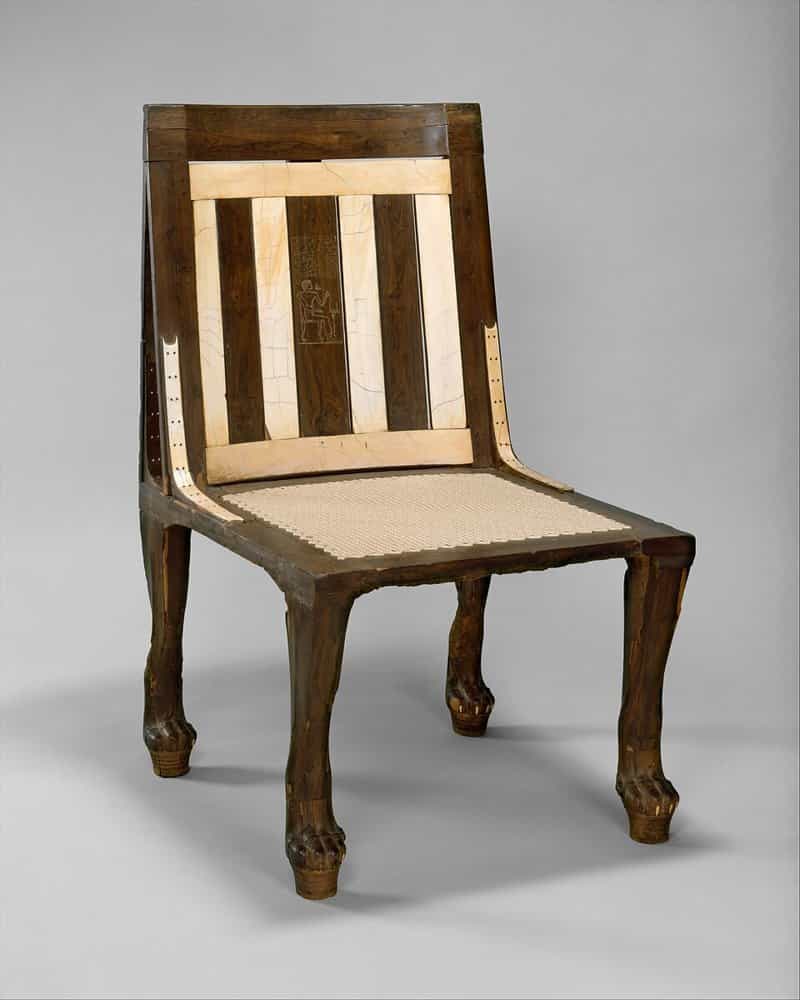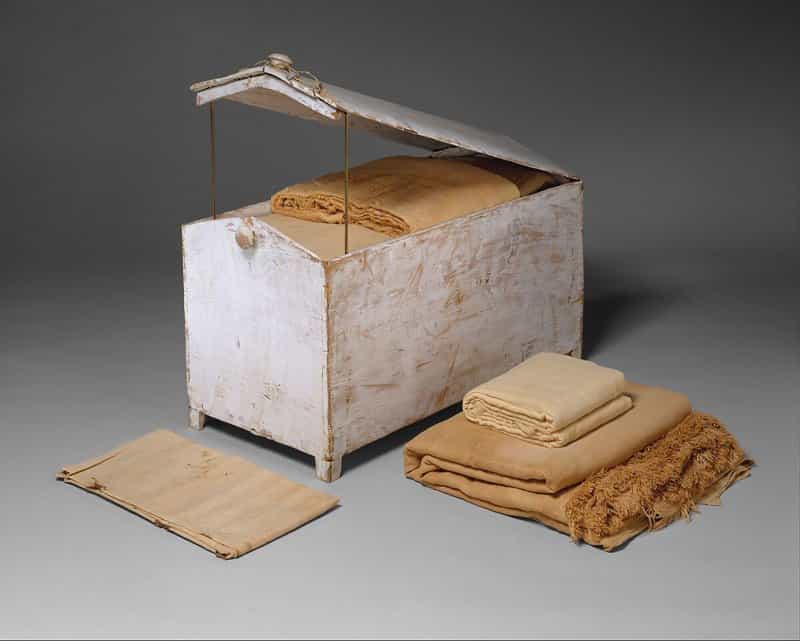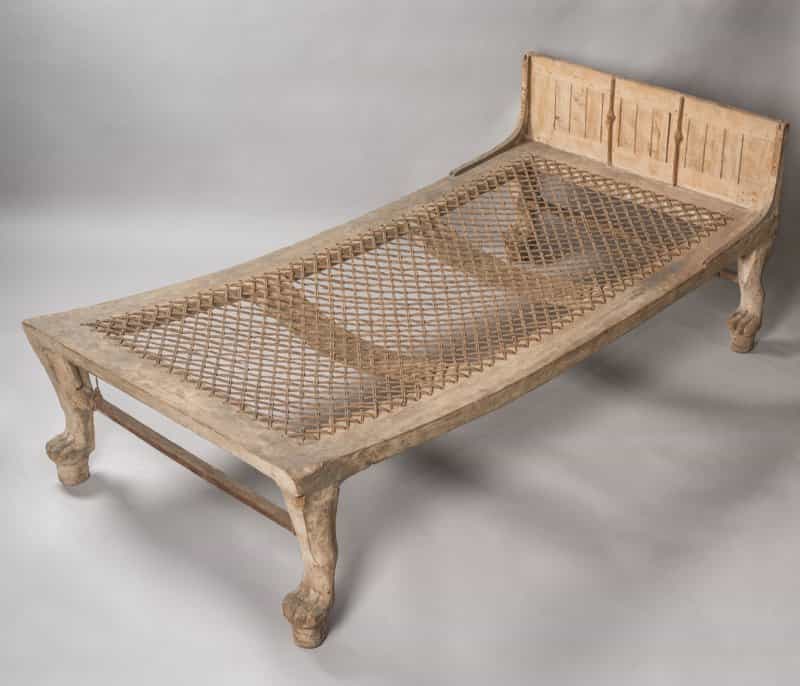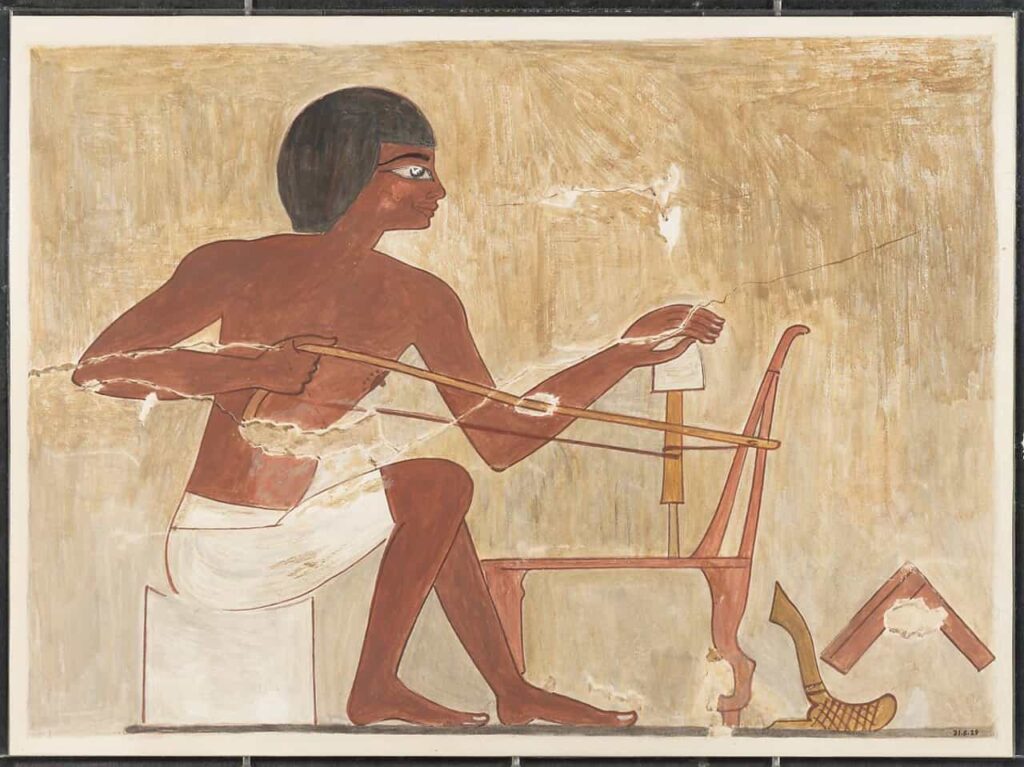“The carpenter wielding the adze is often more fatigued than the peasant; his domain is wood, his plow the adze, his labor endless. He exceeds the limits of his own strength, toiling even by night with light aglow.” This passage from the Satire of the Trades, a literary work dating back to the Middle Kingdom (circa 2000 BC), vividly portrays the demanding craft of carpentry.
Nevertheless, the Satire neglects to delve into the artistry and skill of these craftsmen or the elevated levels of artistic achievement they attained in furniture making.
The adept combination of various woods, intricate inlay work adorned with noble materials like ivory, semi-precious stones, or gold, and the application of varnishes were techniques honed to perfection as early as the dawn of the Old Kingdom (circa 3000 BC).
Luxury Furniture
Opulent furnishings adorned the homes of nobles and sovereigns, as depicted in tomb paintings and illustrated papyri. The elite also interred a rich array of furniture within their tombs as part of their funerary trousseau.
Unfortunately, scant remnants of the dwellings of common laborers have survived to the present day. However, insights into their living conditions can be gleaned from the ruins of Deir el-Medina, the settlement where artisans and builders of the majestic tombs in the Valley of the Kings resided during the New Kingdom, as well as from remnants of other towns scattered throughout Egypt.
Wood, the primary material for furniture crafting, is now scarce in Egypt. This was not the case in antiquity, as groves of poplars, sycamores, acacias, and tamarisks flourished along the Nile Valley. These woods, renowned for their quality, met the demand for basic utilitarian furniture, construction materials, and essential tools.
However, the wealth and influence of the aristocracy and monarchy spurred the importation of luxurious cedar and pine from the Near East, as well as prized African ebony, transported via Nubia, beginning in the early dynastic period (circa 3000 BC).
These esteemed woods, favored for their beauty and durability, found prominence in the funerary trousseaux of the elite. It is thus no coincidence that they are the most prevalent among the preserved artifacts of ancient Egyptian furniture.
Exploring an Ancient Egyptian Household
Irrespective of the opulence or size dictated by its owner’s social standing, the urban dwelling typically comprised a vestibule leading to one or multiple chambers designated for sleeping and bathing, with a rear courtyard housing the kitchen and storage areas.
In this rear section, one would find accommodations for servants. Nearly all residences boasted a staircase ascending to the rooftop terrace, offering respite and repose during sweltering summer evenings.
Thus, one can mentally traverse through an imaginary domicile, transitioning from room to room while detailing its furnishings. The vestibule, often featuring a shrine for religious devotion, typically boasted a loftier ceiling compared to other chambers, allowing for windows to facilitate ventilation and illumination.
A prevalent architectural feature in this space was the presence of one or several columns, a motif also evident in the more modest abodes of Deir el-Medina (from the 18th to 20th dynasties).
Within this vestibule, one encountered seating arrangements for guests and communal dining: chairs, benches, stools, and diminutive tables. In humble dwellings, mats and cushions sufficed.
In more lavish residences, a separate dining area might be designated. The chairs and benches, varying in back height and seat material—be it wood or vegetable fiber—displayed diverse styles, yet are eerily familiar to contemporary eyes, belying their ancient origins spanning millennia.
Of note are the tables, a unique aspect of Egyptian furniture. Unlike the communal dining tables common in many cultures, the ancient Egyptians favored low tables depicted in paintings and papyri, laden with offerings and victuals, where individuals dined alone or in pairs.
The Bedroom
In the realm of the bedroom, the focal point is undoubtedly the bed. Once a simple structure consisting of a basic wooden frame supported by four legs, adorned with a woven plant braid, the bed served as the cornerstone of rest and repose.
Accompanying the bed, one often finds the headrest—a fixture predominantly crafted from wood, although examples made from alabaster or clay also exist. This device comprises a base supporting a slender column, culminating in a curved board designed to cradle the head. Sometimes, the board is cushioned with linen to enhance comfort.
Within the bedroom, storage solutions abound, ranging from wardrobes and dressers for linens and garments to chests designated for toiletries like combs, mirrors, hairpins, and wigs. Containers fashioned from obsidian, ceramic, or ivory housed beauty products such as ointments and perfumes.
Irrespective of quality, the furniture in the bedroom typically exhibits two distinct decorative styles, tailored to their respective functions. Items intended for direct contact with the human body—such as chairs, armchairs, stools, divans, and beds—often feature motifs inspired by the animal kingdom: legs resembling those of bulls or lions, heads of ducks, wings of birds, and so forth. These “living” elements carry symbolic and religious significance.
Conversely, furniture designed to contain or support everyday objects—like cabinets, trunks, and tables—utilize motifs borrowed from civil and religious architecture, incorporating “lifeless” elements such as friezes, columns, or lintels, carved from wood or depicted in paint.
Everyday Objects
In households of sufficient standing, an office served as the hub for record-keeping, equipped with specialized chests for storing rolled papyrus documents secured within leather bags, alongside a drawer designated for writing implements.
Tables were notably absent in this space, as the scribe conducted their tasks seated either on the floor or a stool, with papyrus spread across their lap. Meanwhile, kitchen furnishings encompassed a table, clay and ceramic vessels, and a refractory clay oven.
Lamps, fashioned from clay or stone bowls filled with fat and featuring a central wick, illuminated these spaces. They were either affixed to walls or positioned atop tall wooden supports.
Furthermore, we mustn’t overlook the ingenious ancient technology that transformed clay and plant fibers—such as papyrus, reeds, and rushes—into a myriad of everyday objects. Mats, blinds, curtains, cushions, baskets, and an array of clay utensils supplanted wood in more modest abodes.
Source: Imma Panyella, National Geographic




#Furniture #Homes #Ancient #Egypt

